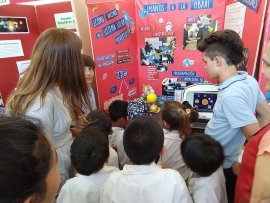According to a report by the World Economic Forum, many of the pupils who enter primary schools today as adults will be doing jobs that do not yet exist today.
Currently, in a large number of countries recognized internationally for their educational systems, the teaching of programming and robotics has become a fundamental pillar, and its contents have been incorporated into the school curriculum from the start: why are these areas becoming more relevant every day?
The massive incursion of Information and Communication Technologies (ICT) into education and the avalanche of countries that have included programming teaching in primary education are not isolated facts. Although the impact of work in these sectors from an early age is still the subject of research, studies conducted so far and work experience indicate great benefits.
Learning to program goes beyond knowing how to use a tool that allows us to develop an application, a video game or automate a household task. It involves carrying out a problem-solving process.
In school programming, students are generally divided into work teams. They are presented with a problematic situation and asked to make a critical analysis, looking for possible solutions. Each team will try to break down the main problem into sub-problems and will design solutions by analyzing the different advantages and disadvantages, exchanging ideas and suggestions in a collaborative way. And eventually there will be a debate to discuss which models to use. Sometimes there will be an optimal solution, superior to all the others, but in general the children will have been able to develop several equivalent "algorithms" - a series of steps that allow us to do something - that solve the situation using different strategies.
In this way, learning to code is almost an excuse to learn to think. Programming on a computer is only the last step in the process that motivated students to carry out critical, logical and mathematical analysis to find an algorithm that would provide an answer to the original problem.
Furthermore, a great advantage of learning to program, especially when using certain programming languages based on educational platforms, is that children stop being simple users of technology, and take an active role, as generators of digital content.
To learn programming, you don't need robots or large resources. On the contrary, there are several educational platforms that guide children and adolescents on this path. And they generally run on normal web browsers; they just need a simple computer connected to the Internet, and sometimes just the computer.
In conclusion, all students have the right to be trained in these fields which are so necessary for their future.
Hernán Galardi,
Robotics and digital education teacher, advanced computer science student


